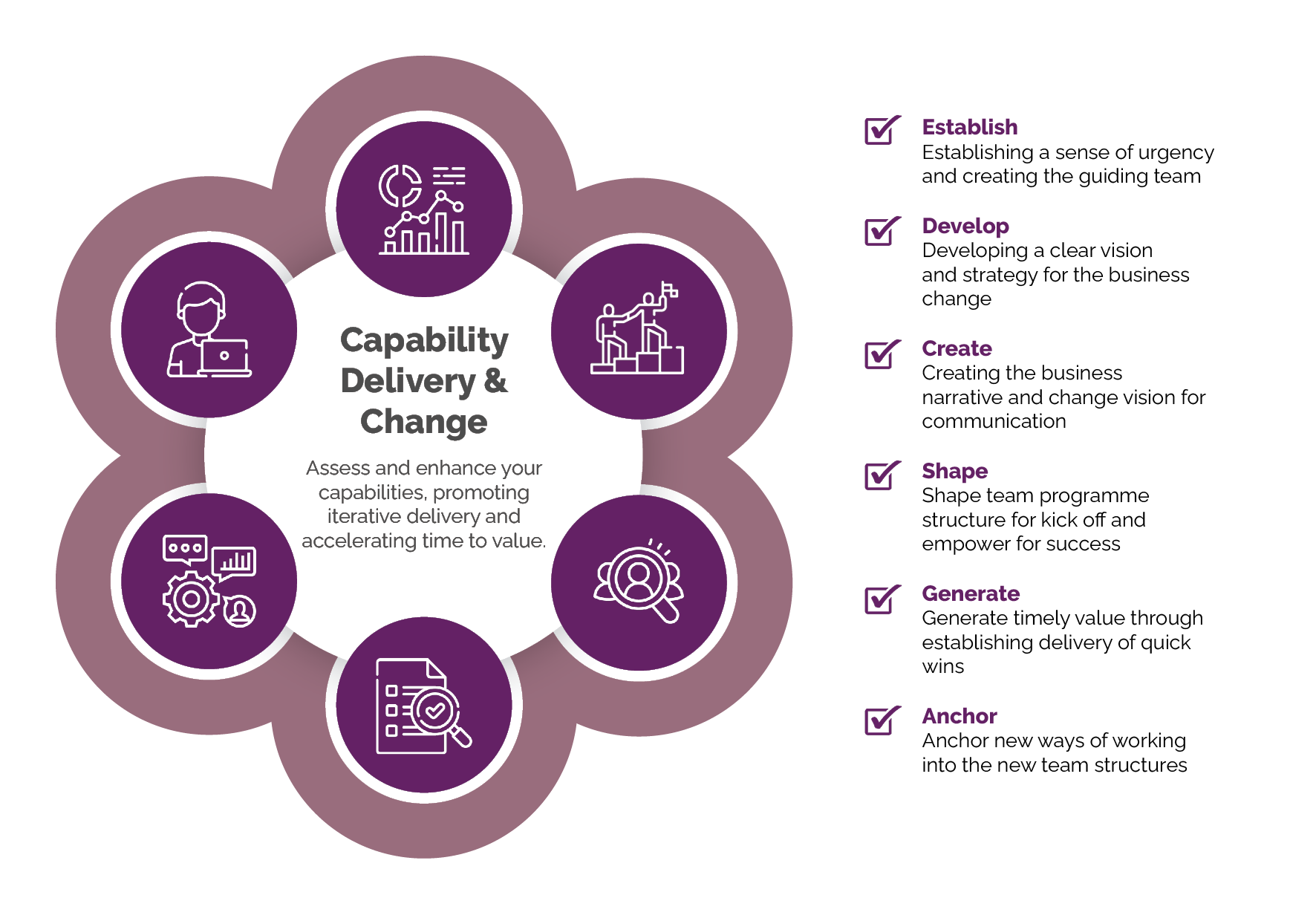In our earlier article, Transformation Success: A Proven Framework to Overcome Obstacles and Maximise Strategic Value, we explored the critical elements needed to turn strategic ambition into results: clarity, execution frameworks, and measurable outcomes. But there was one theme that resonated most with our clients – particularly those navigating complex environments. It wasn’t the strategy or tools. It was the people.
So, in this follow-up piece, we’re going deeper into one of the most overlooked drivers of transformation: the human factor: leadership, capability, accountability and governance.
The Human Edge: Why Transformations Fail (and how to get ahead of it)
We’ve all heard the statistics – only 34% of transformations succeed – but do we know why? Most transformations that falter have strong strategy and good business cases. The challenges that derail them are simpler, but harder: human systems don’t change just because plans say they should.
Transformation starts with great intentions: bold ambition, executive sponsorship, timelines, frameworks, and workstreams. But soon familiar cracks start to appear:
- Leaders pulling in different directions
- Steering Committees that observe rather than intervene
- Delivery teams overwhelmed by shifting priorities and ambiguity
- Eroding confidence and growing fatigue
- Overload, competing priorities, and emotional resistance
We call this the human edge – and getting it right is what separates transformations that stick from those that stall.
Start at the top: Executive alignment on what matters most
Most executive teams agree on the business case. But alignment on paper isn’t enough. What often goes missing is true shared ownership of outcomes, roles and trade-offs.
That’s why we start with facilitated leadership alignment sessions that do more than review slides. We challenge the business case, pressure-test assumptions, and build a shared contract among senior leaders about how they will lead through uncertainty.
Louise LangridgeAPAC Regional Managing Director – Org
The missing middle: Steering Committees that govern
Here’s an inconvenient truth: many Steering Committees are glorified status updates. Members feel under-informed, uncomfortable asking probing questions, and hesitant to intervene without disrupting progress.
We work with Steering Committees to shift from passive oversight to active governance. Our targeted capability-building sessions equip sponsors to:
- Read behind the metrics
- Intervene constructively
- Ask the right questions early
- Create cadence for meaningful engagement and accountability.
Confident governance builds transformation momentum.
When things go wrong: Building resilience to bounce back to green
Transformation rarely moves in a straight line. Disruption, shifting priorities, and delivery fatigue are inevitable. What matters is how quickly you spot problems and respond to them.
Our Back to Green Playbook provides leaders with:
- Structured guardrails and recovery processes
- Clear roles during crisis points
- Techniques to stabilise teams without burnout
- Practical diagnostics to identify capability gaps early.
It’s not about avoiding failure; it’s about building the systems and mindsets that allow you to bounce back faster and stronger.

Mobilising your people, not just your project plan
Transformation is not an engineering problem. Humans don’t operate like Gantt charts. Change is emotional. It demands empathy, clarity, and sustained support.
That’s why we take a phased approach to mobilisation:
- Plan: Build genuine executive alignment, assess readiness, and define the leadership work required.
- Mobilise: Equip delivery leaders and teams, engage vendor partners with clarity of purpose.
- Deliver: Establish cadence, define roles, and reinforce accountability. With the right communication, training, and governance, momentum builds organically – not through force, but through alignment.
Our integrated approach ensures that we are deeply involved in every step of the transformation process, working alongside our clients to achieve their goals. Creating conditions where teams thrive and are equipped to handle pressure.
Make change stick: embedding new behaviours
Nicole CritchleyPartner People & Culture Transformation
We help organisations anchor new behaviours through:
- Targeted capability programs directly linked to operating model shifts
- Change leadership coaching for mid-level managers
- Embedded adoption strategies that survive beyond project close.
A great example of this in action is our recent work with a leading higher education institution on their Student Lifecycle Management transformation. While the focus was on building a modern technological blueprint, success depended just as much on engaging executive stakeholders, uplifting internal capability, and embedding the change across academic and professional services teams.
Through strategic planning, co-designed governance structures, and change leadership workshops, we helped ensure this transformation wasn’t just a technology rollout – it was a business-led shift grounded in purpose, people, and long-term impact.
The human edge is the strategic edge
In our experience, transformations don’t fail because of a lack of frameworks. They fail when organisations underestimate the leadership work required to navigate human complexity.
By focusing on the human edge – leadership alignment, governance capability, delivery resilience, and embedded behaviour change – we help organisations anticipate and manage the predictable challenges that derail so many transformations.
This is the real work of transformation: human, dynamic, and hard to fake.
Our transformation services include:
- Executive Alignment Workshops
- Steering Committee Uplift & Governance Workshops
- Change Management & Capability Uplift Programs
- Vendor Onboarding & Integration Support
- Back to Green Recovery Playbooks
- Health Checks & Assurance Reviews
- End-to-End Delivery & Change Management Services
Let’s continue the conversation.
If your organisation is embarking on a transformation – or working to sustain one – let’s talk.
Let’s make the human edge your strategic advantage.


